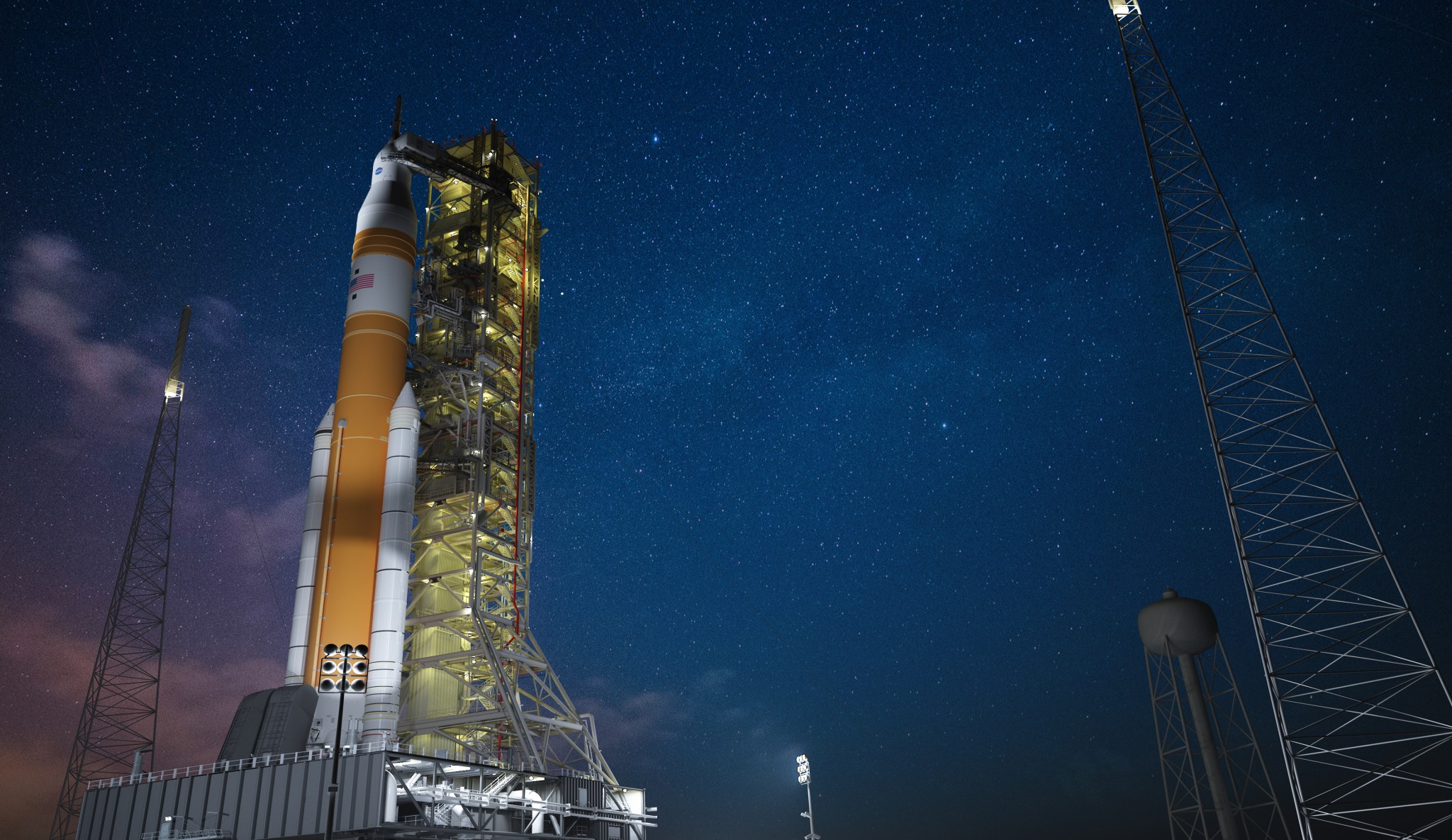NASA reached a milestone toward enhancing the Space Launch System (SLS) rocket for future missions to deep space. Managers convened Nov. 3 for the critical design review of the Block IB evolved configuration of the rocket and determined teams will continue with design and initial production work for the evolved rocket design.
Beginning with Artemis IV, the SLS rocket will fly using the evolved Block 1B configuration with a more powerful Exploration Upper Stage (EUS) that includes larger fuel tanks and four RL10 engines, and a new stage adapter and payload adapter to send the crewed Orion spacecraft and large cargos to the Moon on a single mission. This Block 1B configuration will be capable of launching more than 80,000 pounds of payload to the Moon, includes new flight software capabilities, allows for more launch date opportunities, and enhances crew safety. It will be capable of lifting 40% more mass than the current Block I SLS configuration that will soon launch the uncrewed Artemis I flight test, as well as the Artemis II and III missions. The Block I configuration uses an interim cryogenic propulsion stage with one RL10 engine to provide in-space propulsion to send Orion to the Moon.
Early production work on an EUS structural test article is already in progress at NASA’s Michoud Assembly Facility in New Orleans, and teams recently delivered the interstage simulator to NASA’s Stennis Space Center near Bay St. Louis, Mississippi, for future testing. As teams at Michoud build SLS core stages for future Artemis missions, they are also testing the weld parameters on the recently manufactured EUS hydrogen tank barrel weld confidence article. These tests will allow engineers to construct the EUS structural test article that will be used to qualify the stage for flight. Manufacturing the upper stage is a collaborative effort between NASA and Boeing, the lead contractor for EUS and the SLS core stage.
Through Artemis, NASA will land the first woman and the first person of color on the lunar surface and establish long-term exploration on the Moon in preparation for human missions to Mars. SLS and NASA’s Orion spacecraft, along with the commercial human landing system and the Gateway in orbit around the Moon, are NASA’s backbone for deep space exploration. SLS is the only rocket that can send Orion, astronauts, and supplies to the Moon in a single mission.



























